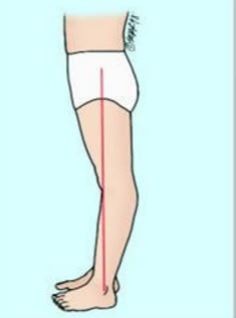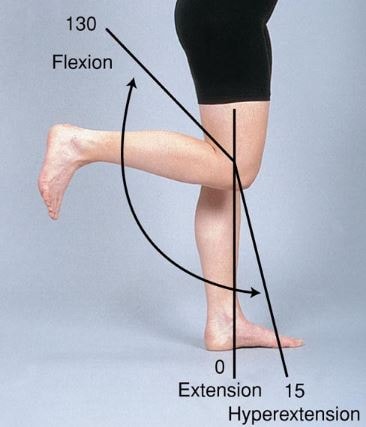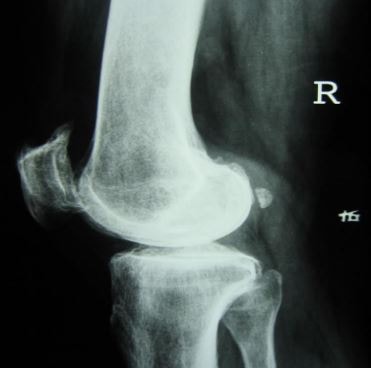Hyperextended Knee
What is Hyperextended Knee?
Knee injuries commonly occur to athletes who engage in high intensity sports and this may cause pain and inflammation of the joint. An example of this injury is the hyperextended knee. In this accident, the ligaments of the knees are stretched beyond their normal range [1, 2, 3].

Anatomy and Pathophysiology
The knee is considered as one of the most complex joints in the body. This joint serve as the connection between the femur or thigh bone and tibia or shin bone. The bones that makes up this joint are the smaller bones alongside the tibia and the patella or kneecap.

Tendons are the ones that connect to the muscles of the leg that allow movement while ligaments join the bones of the knee and contributes to the stability of this joint. It is an example of a bicondylar synovial joint and the movements that are allowed are flexion and extension with a small degree of lateral and medial rotation [4, 5].
In a hyperextended knee, the ligaments of the joint are stretched beyond their limits. This may result to a strain or a tear in the ligament. The damage depends on the severity of the injury and the individual might not be able to bear weight in the affected leg while the knee is recovering [1, 2]. Figure 1 shows an x-ray of a hyperextended knee.
Hyperextended Knee Causes
A hyperextended knee happens when the knee is forced to bend backward. This incident may occur after a wrong landing from a jump or falling from a ladder. This typically occurs to athletes who play sports that involves making sudden turns and stopping immediately.
Examples of these sports are football, basketball, gymnastics and volleyball. Hypertension may also occur after a direct blow to the knee following a vehicular accident. This would usually cause damage to the ligaments of the knee with a possible dislocation of the kneecap [1, 2, 6].
Signs and Symptoms
When the incident occurs, the person may hear a popping sound that resulted from the stretching of the ligaments beyond its normal range of movement. This will be succeeded by inflammation and pain. A mild degree of injury may cause a feeling of locking up in the knee where it may be difficult to bend or straighten the leg.

The swelling and the pain may last for several days after the injury and the leg may appear as out line with the whole leg. Other symptoms may include bruising in the knee area and difficulty walking. The presence of these symptoms should warrant a consultation with a physician [1, 2].
Diagnosis
Health history and physical examination
The mechanism of the injury is essential in the health history. It will enable the physician to assess which part of the knee joint ay be damaged. Physical examination will include infection of the affected knee to assess for any bruising or swelling in the area.
The knee and the surrounding muscles may be palpated to check for any tenderness. Range of motion movements will be performed to assess for the severity of the damage to the knee [1, 2, 7].
Imaging Tests
An X-ray or a Magnetic Resonance Imaging (MRI) scan will be done to get a visualization of the knee. The X-ray will be able to show the presence of any broken bones while a MRI can detect the injuries to the ligaments and other surrounding structures of the knee [1, 2, 7].

Figure 1- X-ray of a hyperextended knee
Treatment
If the damage to the knee is minimal, the treatment would include pain medications and resting the injured knee. Over-the-counter pain medications like ibuprofen and acetaminophen may be given by the physician to help relieve the pain.
The patient may be advised to use crutches to help minimize weight bearing on the injured knee. It would take around 2-3 weeks for the knee to fully heal [1, 7].
Severe damage to the ligament may require a surgical intervention in order to repair the damage. After the procedure, the patient will have to undergo rehabilitation in order to strengthen the knee. The recovery phase may take up to 9 months. It is essential to follow through the whole rehabilitation to help improve the muscle strength and flexibility of the knee after the injury [1, 2, 7].
References
- Jeffress, D. (2016, March 24). What is a Hyperextended Knee? Retrieved from Wise Geek: http://www.wisegeekhealth.com/what-is-a-hyperextended-knee.htm#comments
- Minimemedia.com. (2015, October 19). Hyperextended Knee. Retrieved from Minimemedia.com: http://minimemedia.com/hyperextended-knee/
- Laskowski, E. (2015, May 20). Hyperextended knee: Cause of serious injury? Retrieved from Mayo Clinic: http://www.mayoclinic.org/hyperextended-knee/expert-answers/faq-20058471
- WebMD. (2014). Knee (Human Anatomy). Retrieved from WebMD: http://www.webmd.com/pain-management/knee-pain/picture-of-the-knee
- Teach Me Anatomy. (2016, February 28). The Knee Joint. Retrieved from Teach Me Anatomy: http://teachmeanatomy.info/lower-limb/joints/the-knee-joint/
- MMAR Medical. (2015). Knee Hyperextension. Retrieved from MMAR Medical: http://www.mmarmedical.com/Knee-Hyperextension-s/346.htm
- Wedro, B. (2015, July 30). Torn ACL. Retrieved from eMedicine: http://www.emedicinehealth.com/torn_acl/page7_em.htm
